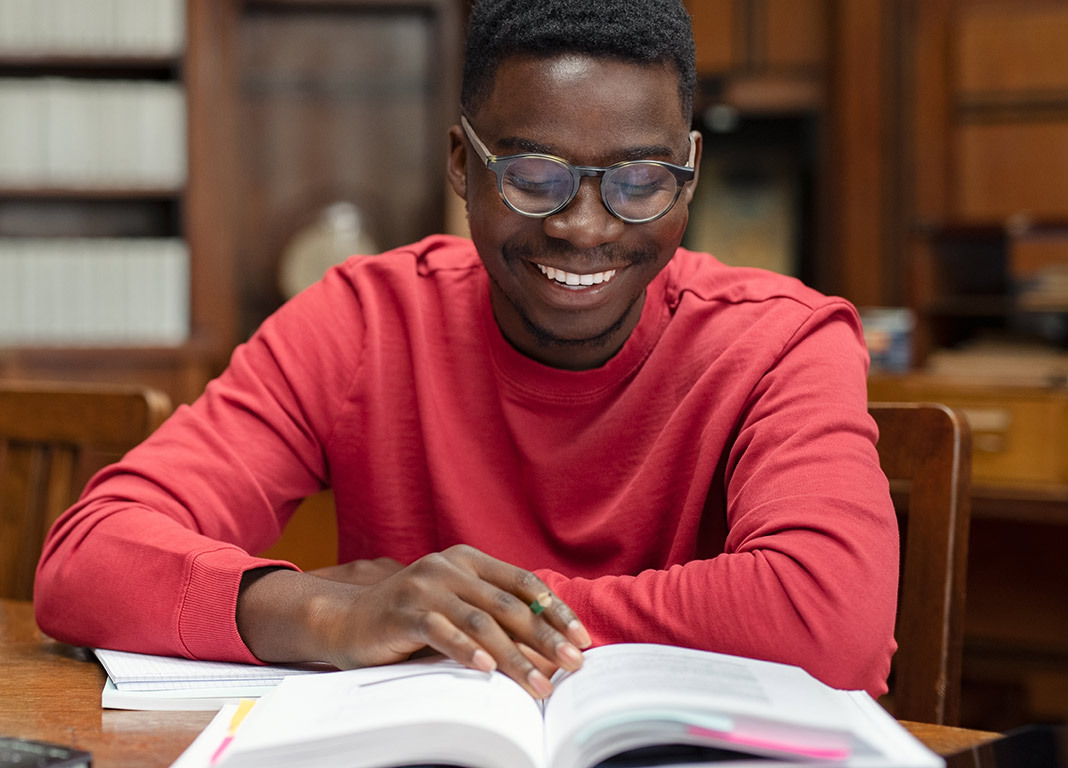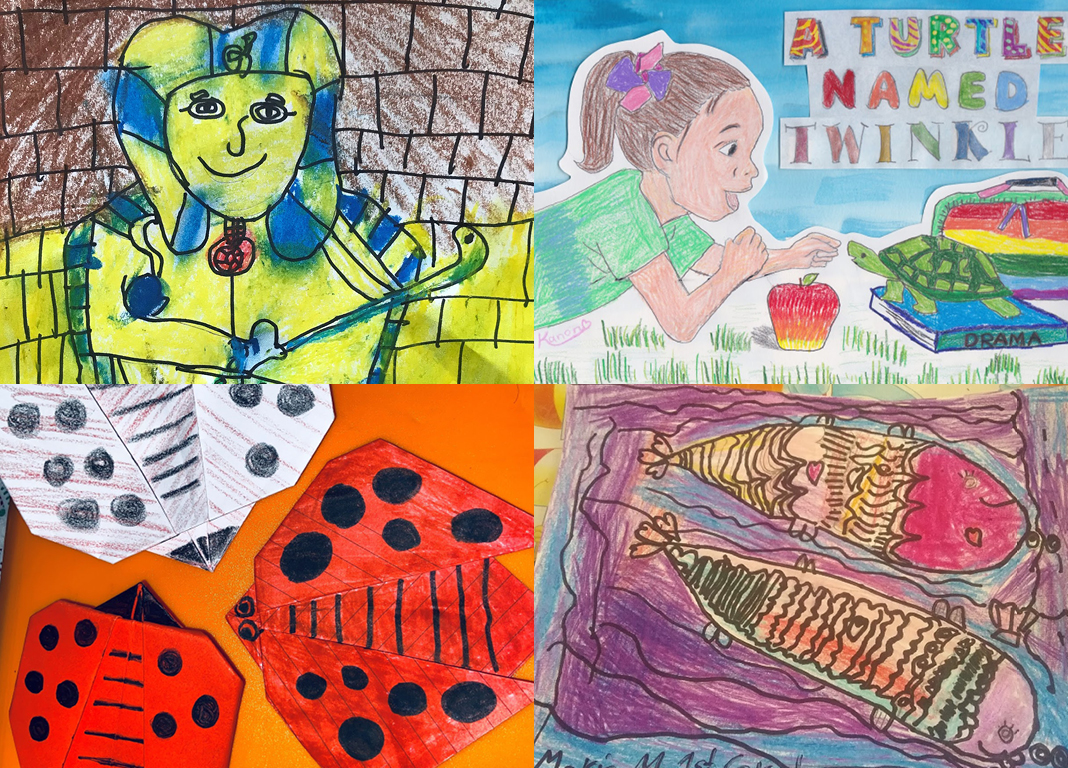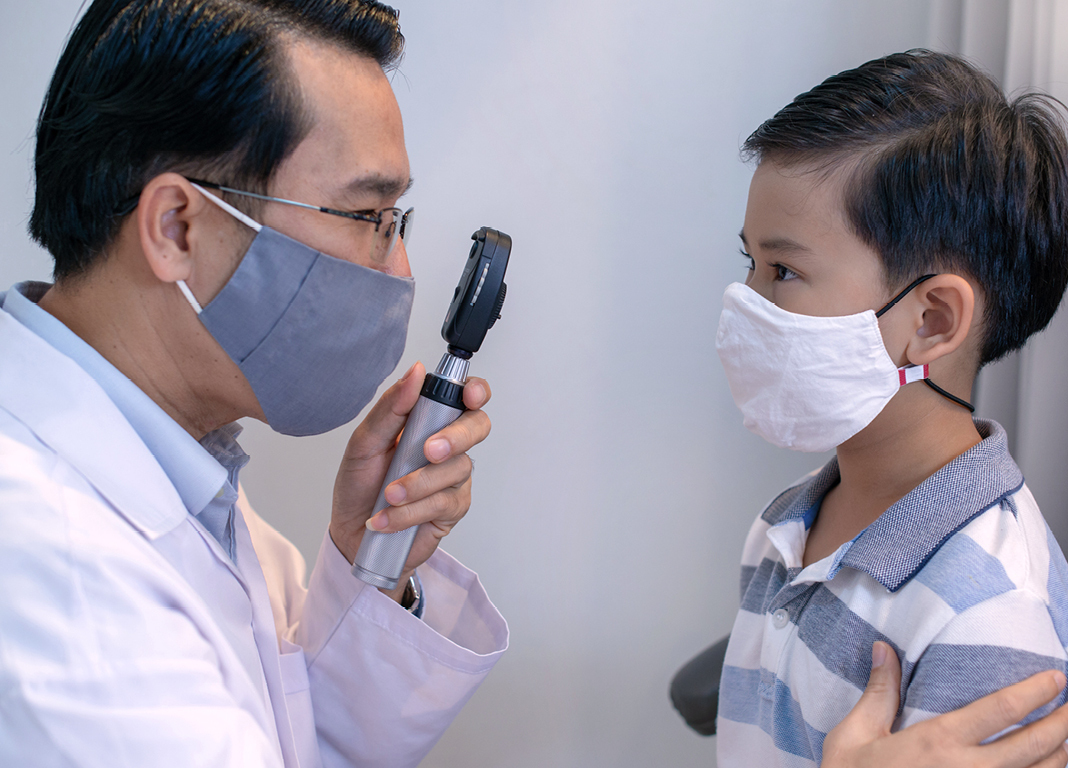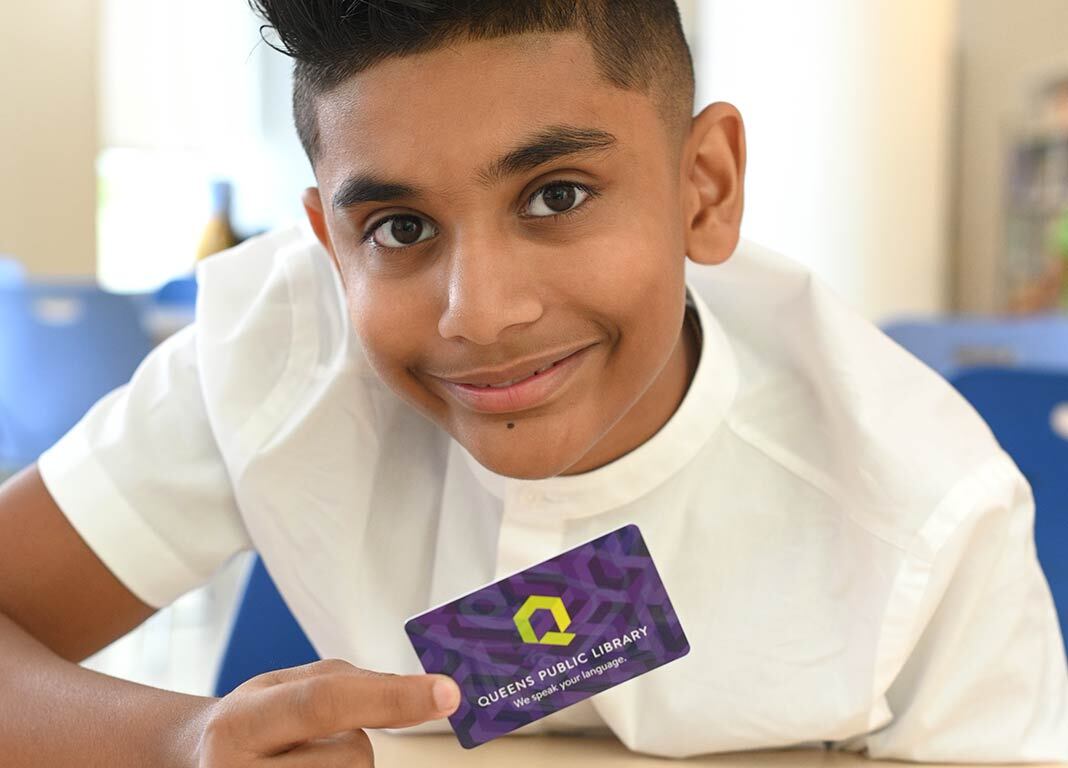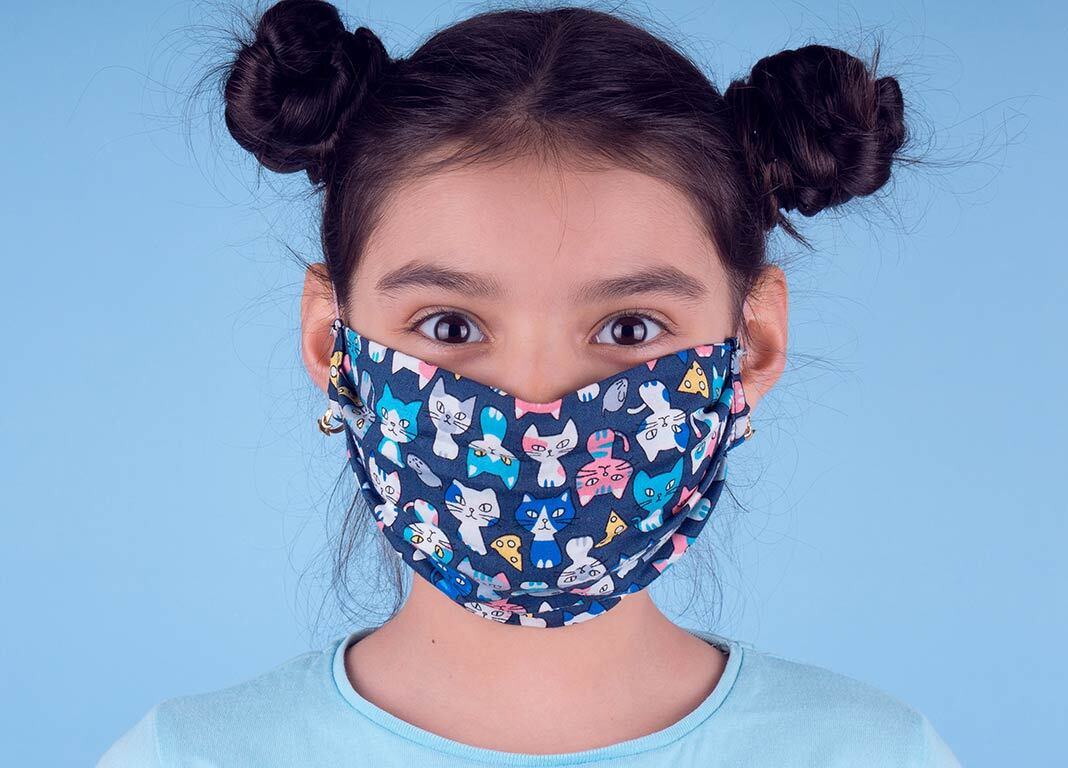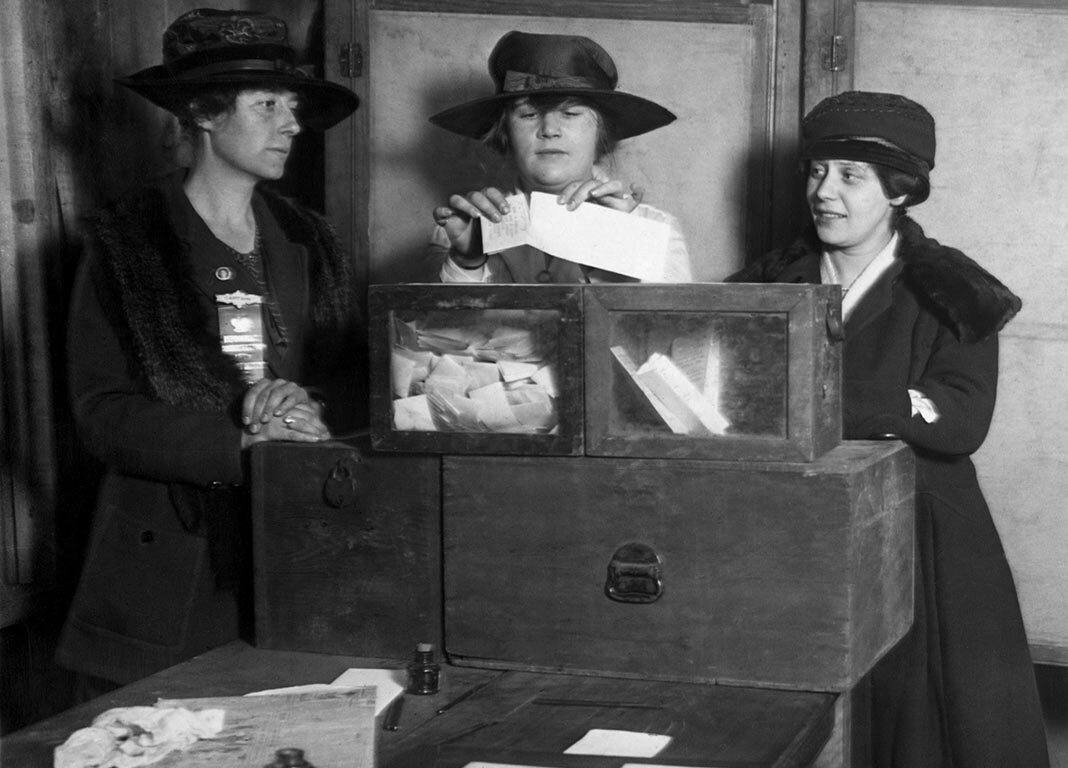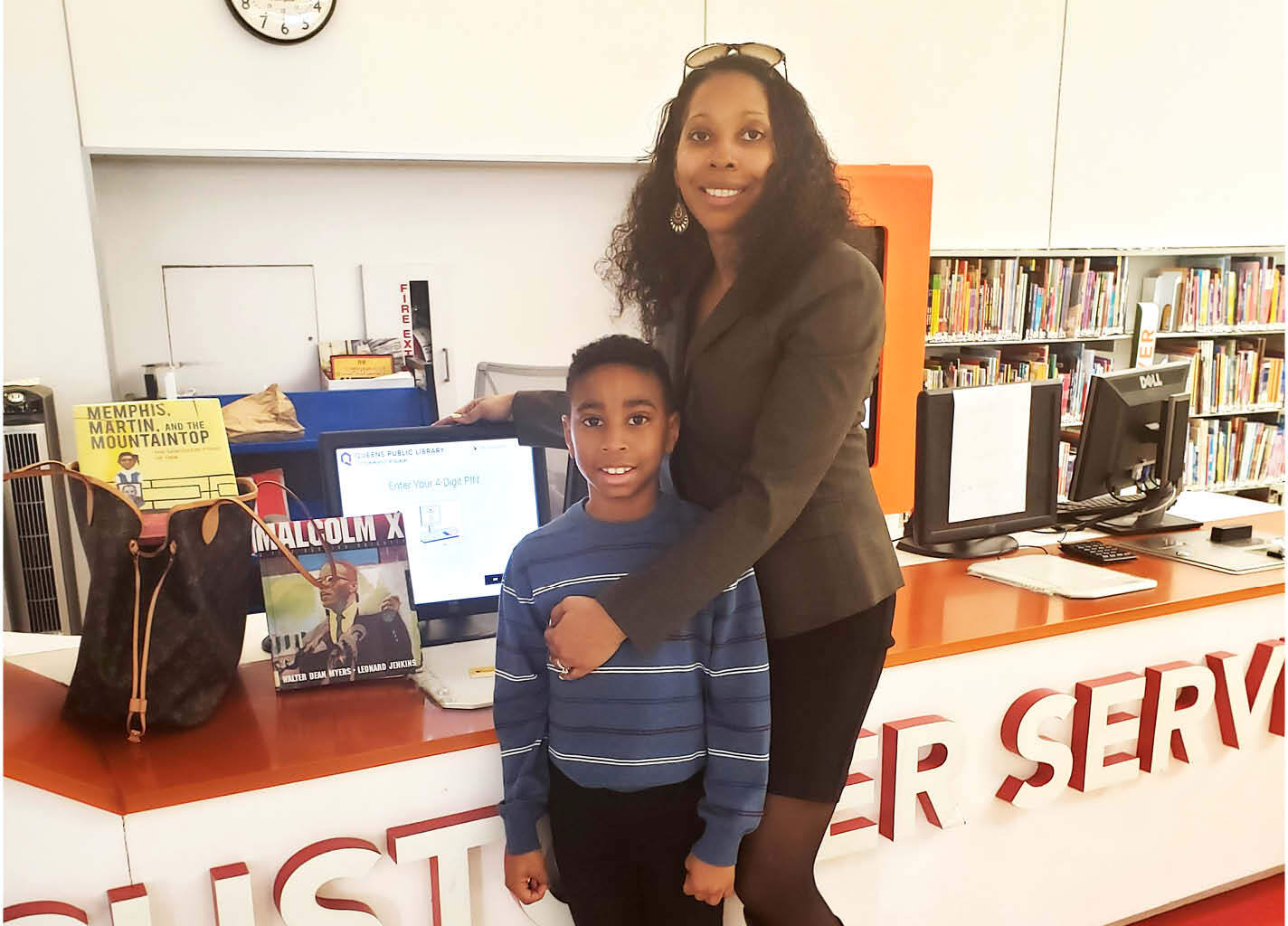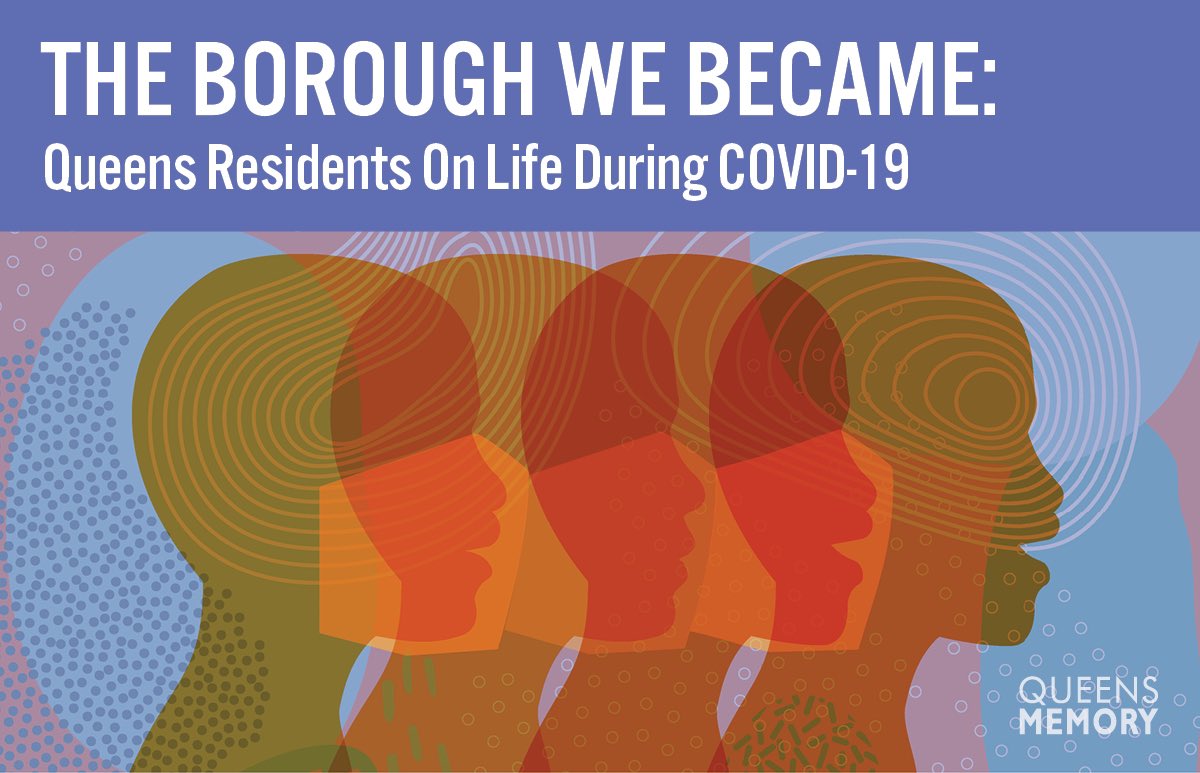Many high school students are wondering how to be prepared for the upcoming school year as COVID-19 continues to be part of our new normal. Attending virtual College Readiness programs through Queens Public Library can help you to adapt and prepare to apply to college. Read more to find out how COVID-19 may affect your admissions process.
Shifting Priorities in College Admission Process
Princeton Review’s Outreach Manager Alison Pascale explains, “The college admissions process is very different from previous years. Students should be focusing on keeping their grades up, certainly, and start working on their applications as soon as they open. The college search process for students has definitely been impacted, and this year many students that would have gone on campus visits won’t have gotten that chance. It’s important to reach out to college’s admissions offices before submitting applications with any questions you may have. Students should also work to make sure that their personal statements are polished, but most importantly communicate who they are and why they want to go to college. Without test scores and extracurriculars for many students, the personal statements and letters of recommendation just matter that much more.”
Securing Recommendations for College
Since getting recommendations from teachers is more important than ever this year, making an extra effort to forge a relationship with them will matter. Pascale notes, “This school year is certainly going to take additional focus for seniors, and the biggest hurdle will be college applications and keeping their grades up through virtual and hybrid learning. The most important thing for seniors this year will be forging connections with their teachers, even if they are learning virtually. Sending emails with questions that go beyond just assignments – clarifying larger topics, expressing interest in learning more about certain subject areas – can go a long way in making sure that students get the support they need. If students still need to ask for letters of recommendation, this can also be a good way to ensure that you get a personalized letter that speaks to your curiosity and engagement.”
Learn about Colleges through Virtual Fairs
One way you can find out about colleges is through virtual college fairs; “the great thing about virtual college fairs is that students can be exposed to colleges they wouldn’t have known to look at otherwise. If your school is hosting a virtual college fair, I highly recommend attending. The most important part, though, is following up with colleges you are interested in after the fair to ask specific questions. This really will help you stand out as an applicant,” says Pascale.
Before you attend the virtual college fair, you must prepare. Ask yourself the following questions.
• Do you have an idea of where you want to go to school?
• What are you looking for in a college?
• Am I interested in remote learning opportunities? Does the college offer those?
• Does it offer the major that is of interest?
• Is it a large or small school?
• Urban or rural?
• Public or private?
Once you have answered these questions, it is time to explore the list of schools that will be represented. There will be schools that are new to you. This will give you the chance to check out those schools. There may be schools represented that offer your major and meets your criteria. Register early! Usually the virtual college fair will mimic the structure of an onsite event. There will be the college fair portion. In addition, there will be workshops that you can choose to attend. Remember they may have a cap on the number of students that register. You do not want to miss the event because you waited too late.
The National Association for College Admission Counseling will hold virtual fairs this fall. Visit here to learn more. The dates and times are as follows:
• 10/12 1-9pm
• 10/18 12-8pm
• 11/8 2-10pm
Resources
U.S News: A Guide to Virtual College Admissions Tools
How to Apply for FAFSA: FAFSA Application
The New School Center for New York City Affairs: FAFSA How-To Guide for High School Students
U.S. News: Navigating Test-Optional Admissions Amid Covid-19
U.S. News: What to Know about the Optional SAT Essay
U.S. News: Where to Find the Lowest College Costs by Income
Tags
STACKS, our free enrichment program for children in grades K-5, continues online this fall.
We spoke with several staff members about their experiences working with students virtually and some of the benefits of the STACKS program.
"Working with students virtually has been exciting and challenging. One has to think about activities in a different way. Instead of face to face interaction, they see you but you don’t see them. However, just like face to face interactions, once they become familiar with you, as a regular presenter, the students relax and interact with you verbally and freely," says Fredine Freeman, STACKS Leader at Queens Village Library. "Looking forward to the fall season allows me to make necessary changes in planning. There will be activities that will deal with upcoming holidays and events. This is a perfect opportunity to present experiences in reflection, creativity, education, and just plain old fun." According to Freeman, a highlight of the summer STACKS program was Snacks with STACKS: "Once a week there would be a cooking demonstration of healthy snacks presented. The ingredient theme usually would be fruits or veggies. The students loved talking about flavors and the ingredients. Plenty of conversation was generated with this group."
"What I love the most about STACKS is the fact that it is so versatile. Our STACKS students experienced all types of programs. Whether it is academic, arts and crafts or games, there are so many forms of learning through our programs which makes it so beneficial. Students are given the opportunity to create hands-on activities while simultaneously learning about different topics. STACKS also created a community of its own. So many friendships were formed because of this program, whether it was with students or with parents, STACKS is a place they come together to bond," says Maria Sultana, STACKS Leader at Jackson Heights Library.
Azreen Hasan, STACKS Leader at Jakson Heights Library, spoke of the importance of connecting with students virtually during this time when STACKS cannot happen in person. "Now more than ever, we need to be able to connect with our students and ensure they are developing their social, emotional, cognitive, and hands-on skills in a secure online environment. When speaking to my students virtually, many of them expressed how much they miss STACKS being in person. Although we are in a new platform of learning, I have found so many alternative creative ways to keep our students feel engaged and connected."
Priscilla Munoz, STACKS Leader at Flushing Library, described some of the benefits of working virtually. "Working with students through the STACKS Virtual World has given me the opportunity to extend my interaction with kids from all over the Queens borough! It was impressive to see how well the students have been able to adapt and transition to participate in this new reality."
"My favorite part of working with the STACKS students is seeing how much they have enjoyed a program. Seeing their artwork or them participate in sing alongs and answer trivia questions has been a real treat," shared Sotalia Black, STACKS Leader at South Hollis Library.
Coretta Osmond, mother of third-grader Connor, said that overall the program was great. Her son's favorite experience was writing about his hero. She enrolled her son because he needed something to stimulate him during the time he was at home. She recommends STACKS as it was "very engaging and educational."
Enrollment for STACKS begins September 21 and the program launches on October 5. Join the learning and fun! Learn more here.
Five Steps to Sign up for STACKS
1. Provide the following required information:
a. A valid e-mail address that you check frequently. This is our primary communication method with families.
b. Contact phone number (preferably mobile)
c. General student info (name, grade, etc.)
2. Access the enrollment form here.
3. Complete the enrollment form carefully. Please make sure to type your email address correctly, otherwise you won’t receive our messages. After completing your enrollment form, you will receive a message confirming your entry into the program.
4. Make sure to check your e-mail on Friday, October 2, for your STACKS Welcome message and official access to our STACKS Virtual World website.
5. Remember to join our inaugural day of STACKS Virtual World—Fall 2020. We can’t wait to see you there on Monday, October 5!
Keeping your children healthy as they go back to school is always a priority, and even more so during the COVID-19 pandemic. We asked medical professionals for their advice for students and parents as we enter a new and very different school year in the age of COVID-19.
Supporting Your Children at Home
Eight Ways to Protect Kids’ Mental Health During eLearning
Your Kids in the Classroom
“It’s important for both kids and adults to remember that the best tools we now have to fight the spread of COVID-19 involve our own personal behaviors,” says Dr. M. Pilar Gonzalez, the Director of Pediatric Ambulatory Care at NYC Health + Hospitals/Elmhurst and Assistant Professor of Pediatrics at the Icahn School of Medicine at Mount Sinai.
- Students should wear face masks covering the nose and mouth while out in public and during the school day. Face masks need to be changed when dirty and should be changed at least once a day. Surgical masks, or thicker, double-cloth face masks are a good choice.
- Students should practice hand hygiene through washing hands frequently with soap and water for at least 20 seconds. If they don’t have access to soap and water, they should use alcohol-based hand sanitizer and rub their hands together until their skin is completely dry. Protocols for hand washing or sanitizing should take place every 2 hours, including as soon as arriving to classrooms, and before and after breaks and lunch.
- They should also practice social distancing of six feet apart. Physical distancing is a must when eating lunch as face masks need to be removed. If possible, students should use alternative modes to go to school other than the school bus, like walking or using a private car.
- Continuous monitoring of possible COVID-19 symptoms is important. Kids need to stay home even with mild symptoms and also when one household member is sick. Any student, teacher, or staff member with symptoms should be tested and evaluated by a health care provider as quicky as possible. With or without test results, anyone with symptoms needs to stay home for at least 10 days after symptom onset and symptom free for 24 hours without the use of medication. All students and teachers in a class with a confirmed case are assumed close contacts and need to quarantine for 14 days since their last exposure.
Supporting Your Children at Home
“The coronavirus pandemic is embedded into our lives and has affected the way that we all live,” says Dr. Jennifer Pintiliano, Associate Director of the Department of Pediatrics at NYC Health + Hospitals/Elmhurst. “Adults may think that children will not notice all the changes and the stress, but they are very sensitive to what is going on. Young children are highly affected by the quarantine and the anxiety of their parents and other adults. Older children and adolescents need their parents and other adults to be emotionally available to listen to them and to hear their concerns. Parents should provide accurate, truthful information to adolescents. Here are a few things you can you do to help your children.”
- Create daily routines which include keeping set mealtimes, bedtimes, and finding a time to do enjoyable things. For younger children, this can be sing-alongs, reading a book, or playing games together. For older children it could be having a talk, listening to music together, or watching a movie or TV show as a family. It is important for your child to know that you will make time for them every day. Tell them you love them and give them plenty of affection.
- Support and reassurance from parents or caregivers is very important during periods of stress. Help the children in a way that is appropriate for their age. Keep explanations simple. Remind children that researchers and doctors are learning as much as they can, as quickly as they can, about the virus and are taking steps to keep everyone safe. Help them understand that the pandemic will end. Remind your children of what they can do to help—washing their hands often, coughing into a tissue or their sleeves, and getting enough sleep.
- Monitor their media. The American Academy of Pediatrics encourages parents and others who work closely with children to filter information and talk about the pandemic in a way that their child can understand. Keep young children away from frightening images they may see on TV, social media, computers, etc. For older children, talk together about what they are hearing on the news and correct any misinformation or rumors you may hear.
- Take care of yourself. This is very important. Even if children are not directly exposed to the trauma, they can recognize stress and worry in older children and adults in the house.
- Be a good role model. COVID-19 doesn't discriminate and neither should we. While COVID-19 started in Wuhan, China, it doesn't mean that having Asian ancestry—or any other ancestry—makes someone more susceptible to the virus or more contagious. Stigma and discrimination hurt everyone by creating fear or anger towards others. When you show empathy and support to those who are ill, your children will too.
- Communicate with their school. With social distancing in effect, children have to adjust to new ways of learning through remote schooling. Ask teachers and/or school staff how much of a role you should have in keeping your child or teen organized, focused, and on task. All parents should feel comfortable asking questions like: "What has worked for my child in the past when they needed to focus? How much assistance should I be providing during homework? Who is in charge of monitoring assignment completion?"
- All children will benefit from structure, so for children that are learning at home, it’s important to have a schedule that is posted in the home. Schedule breaks during the school day since research shows that children can focus and work effectively for 45 minutes at a time, at most. Alternate schoolwork with enjoyable activities. Always make sure to give positive feedback to your child—tell them how great they are doing!
Eight Ways to Protect Kids’ Mental Health During eLearning
“While virtual learning may be necessary for safety, there are good reasons to hesitate about it,” says Erin Leyba, L.C.S.W., Ph.D., the author of Joy Fixes for Weary Parents. “Too much screen time can wreak havoc on kids' bodies, brains, and moods. During eLearning, parents can be intentional about giving children specific types of breaks from screen time—breaks that bring in laughter, creativity, fun, connection, purpose, nature, relaxation, and movement. Breaks build joy and balance the impact of screen time on kids’ bodies, brains, and moods.”
- Exercise (walk, bike ride, shoot hoops)
- Service (bring food to a pantry, make get-well cards, write a friend a surprise chalk message, rake a neighbor’s leaves, write political postcards, make muffins for a friend)
- Creativity (art, poetry, writing, singing, music, sculpture, crafts)
- Fun (dance party, sprinkler run, blast favorite music, build a fort, listen to music, etc.)
- Social (distanced visit with a grandparent, talk about your day, write a pen pal, distanced visit with a friend, one-on-one time with parent)
- Reading, Writing, and Relaxation (read real books or magazines, write a pen pal, write a story, write a personalized note, or do nothing)
- Nature (gardening, walk, bike ride, picnic, lunch outside, etc.)
- Adventure (go somewhere new, do something new, make something new, play something new)
Thank you to all our experts for their advice! Use the links below to read our other Back-to-School blog posts, including information on all of QPL’s Back-To-School Resources, tips on getting your kids used to their face masks, and how to sign up for a Queens Public Library card or eCard.
Give Children the Gift of Lifelong Learning
A gift to the Queens Public Library Foundation will help ensure our collections and digital resources are available to young people who are back in school, whether at home or in the classroom. Donate to the Library today!
Posts in This Series
The election is coming up on November 3 – it’s time to get ready to vote. Visit here to register to vote. If you’re not sure if you are registered, you can check your status here or by calling 866-VOTE-NYC (TTY-212-487-5496 for the hearing impaired).
Register early – September 22 is National Voter Registration Day! On that day, all of our to-go locations will have voter registration forms and absentee ballot request forms available for you to pick up. Take some time to be sure you are registered. The deadline to register to vote is October 9.
All New York voters can vote this fall by mail due to the risk of contracting coronavirus. Once you are registered, visit nycabsentee.com to request your ballot. If you want to vote in person, find your poll site by visiting here or by calling 866-VOTE-NYC.
More information and print-at-home forms can be found here.
For more information about how to vote, visit NYC Votes.
Text NYCVOTES to 917-979-6377 to receive text alerts about your elections or sign up here for email alerts.
Make sure to register so that your voice is heard this fall!
FAQs About Voting
Where and when do I go to vote?
Find your poll site location online at nyc.pollsitelocator.com or call 866-VOTE-NYC. Poll sites are open from 6:00 am to 9:00 pm on Election Day (Tuesday, November 3). You can also vote early starting October 24 through Sunday, November 1. The hours and locations for early voting may differ from your regular poll site. Remember to check before you go vote!
Do I need to show identfication to vote?
You only need to show ID if you are voting for the first time and you did not supply a DMV or Social Security Number when you registered. Acceptable forms of ID include a government-issued photo ID, paycheck or utility bill.
Could my registration have expired?
Your registration has no expiration date. Check your registration status online at voterlookup.elections.ny.gov (you will need to enter your county, name, date of birth, and zip code), or call 866-VOTE-NYC (TTY-212-487-5496 for the hearing impaired) for assistance.
What if I moved within New York City since the last time I voted?
When you move, you should change your address with the NYC Board of Elections by submitting a new voter registration form. Fill in the box labeled “Voting information that has changed” by entering your new and old addresses, check the box for the party you wish to be enrolled in (do this even if you were enrolled in a party at your old address), and provide any other requested information. You may also update your information through the NYS Department of Motor Vehicles website. Your change of address must be received by the BOE by October 14, 2020. Call 866-VOTE-NYC to find out whether your change of address has been processed.
What if my name is not in the voter book?
First, make sure you are signing in at the correct table for your assembly and election district. These district numbers are printed on the card the BOE sends to all registered voters before each election. A poll worker is available at each poll site to look up your name and address and determine which district you live in if you need assistance, or check the poll site locator at nyc.pollsitelocator.com. Once you confirm that you are signing in at the correct table, if you are not on the poll list, it may be because the BOE did not receive your registration form. If you believe that you are eligible, you can still vote. Ask a poll worker for an affidavit ballot, and follow the instructions.
What if a poll watcher challenges my right to vote?
If a poll watcher challenges your right to vote, you can ask a poll worker to administer an oath to you to affirm your qualifications to vote. You will swear under penalty of perjury that you are eligible and qualified to vote, after which you will be permitted to vote by regular (not affidavit) ballot.
What is an affidavit ballot?
An affidavit ballot is a paper ballot you can request if you’re not listed in the voter book but believe you are eligible to vote and are at the correct polling site. Follow the instructions to fill out this ballot and the envelope, and give it to a poll worker when you are done. After the election, the Board of Elections will check its records — if you were eligible to vote, were at the correct poll site, and filled out the ballot and envelope correctly, your vote will be counted. If not, you will receive a notice that your vote did not count. Your affidavit envelope serves as a registration form and change of address form for future elections so the BOE will have your correct information going forward.
Can I vote by mail?
This fall, all New Yorker voters can vote by mail due to the risk of contracting the coronavirus (COVID-19). You can request your ballot online at nycabsentee.com. Select “temporary illness or disability” as the reason for your request. You can also vote by absentee ballot if you are unable to get to your polling place due to absence from New York City on Election Day; temporary or permanent illness or physical disability; hospitalization; duties related to primary care of one or more individuals who are ill or disabled; or detention in a veterans administration hospital, jail, or prison, awaiting trial or action by a grand jury, or in prison for a conviction of a crime or offense that was not a felony. More info and print-at-home forms can be found at www.nyccfb.info/absentee. Note: the post office cannot guarantee timely delivery of ballots applied for less than 15 days before an election.
How do I vote by mail?
First, you must request a mail-in or absentee ballot (see above). If you qualify, the BOE will send you an absentee ballot with two envelopes, an inner envelope for you to sign and date and an outer envelope which has the BOE’s address on it.
- Fill out your ballot (do not make any stray marks or write anything on the ballot).
- Fold the ballot and place it in the envelope that has a line for the date and your signature. Seal the envelope (do not use tape).
- After you have read the voter oath, sign and date the envelope underneath the oath.
- Place the ballot envelope into the outer envelope with the BOE’s address. Seal the envelope (do not use tape).
- Add postage if required and make sure the envelope is postmarked with the date of mailing.
- Drop off the sealed envelope at any poll site or local BOE office.
Read the instructions on your ballot carefully as they are subject to change.
What if I planned to vote in person, but fall ill and can't get to my polling place on Election Day?
If the deadline for requesting an absentee ballot by mail has passed and you cannot appear at your poll site on Election Day because of an accident or sudden illness, you can send a representative to your BOE borough office with a written letter of authorization to obtain an absentee ballot on your behalf. A completed application and your completed ballot must be returned to your BOE borough office by 9:00 p.m. on Election Day.
I have a disability and I need help voting. What resources are there for me?
You have the right to request and receive assistance from anyone of your choice (except your employer or union representative) while you are at the polls. You can also ask any of the poll workers at your poll site for help, or ask to use the ballot marking device (BMD). You can use the BMD either to see the ballot on a display screen or listen to your choices through headphones. You also have the right to vote absentee if you’re unable to get to the polls.
I am currently homeless. Can I vote?
Yes, people experiencing homelessness can register and vote in New York City, but you must have a mailing address where the BOE can send you notices.
Can I vote if I was convicted of a felony?
You may register and vote if you were convicted of a felony and for that felony:
- You were sentenced to probation;
- You were not sentenced to incarceration or your prison sentence was suspended;
- You have served your maximum prison sentence, in which case you are able to re-register to vote
- You were on parole and then discharged, in which case you are able to re-register to vote; or
- You have received a pardon, including those covered by NYS Executive Order No. 181, or have been issued a Certificate of Relief from Disabilities or a Certificate of Good Conduct while on parole.
You may not register or vote, if you have been convicted of a felony and for that felony:
- You are currently incarcerated; or
- You are under parole supervision, unless:
- 1. You’ve received a pardon through NY State Executive Order No. 181, “Restoring the Right to Vote for New Yorkers on Parole.” (Parolees should check the Dept. of Corrections and Community Supervision website or with their parole officer to learn if they’ve received a “voting pardon” under this order), or
- 2. You have been issued a Certificate of Relief from Disabilities or a Certificate of Good Conduct while on parole.
It’s back-to-school time and you may be wondering which kind of card you need to access all of the resources that your children will need for school. Here’s a brief primer on the difference between a regular library card and an eCard.
First, what’s required to get an eCard? An eCard only requires a valid email address. It is free if you live, work, go to school or own property in New York State, while it is $50 if you are out of state. What are the benefits of an eCard? With eCards, you can access all of our digital materials, including
- music
- TV series
- Great Courses learning opportunities
- databases
- helpful resources for homework help like Brainfuse
You can check out eBooks, too!
What’s required to get a regular card? For a regular card, you need a valid street address – and proof of the address, as well as a picture ID. Like the eCard, you need to live, work, go to school or own property in New York State to get this card for free; if you are out of state, you can still get one, but it will cost $50. You’ll have to come in person to one of our To-Go locations to obtain a regular card, while you can get an eCard completely online and no identification is required. The benefits of a regular card are all those of an eCard, plus the ability to check out all of our materials such as regular books.
We recommend that if you plan to get a regular card, you first sign up for an eCard so your information will be in our system. This will make getting the regular card at a branch faster and easier.
For more information or to obtain an eCard, visit here.
Give Children the Gift of Lifelong Learning
A gift to the Queens Public Library Foundation will help ensure our collections and digital resources are available to young people who are back in school, whether at home or in the classroom. Donate to the Library today!
Posts in This Series
Because of back-to-school, children may have to wear masks for much longer periods of time than they have experienced. The American Academy of Pediatrics recommends getting your child used to a mask before they need to wear it in public or in school. Here are some tips from them:
- Face masks significantly reduce the spread of the coronavirus. Teaching children this can help them understand the importance of wearing a mask to be safe. Explain in simple terms that we are protecting ourselves against germs.
- Practice wearing a mask at home and even practice having a toy or stuffed animal wear it. This can help children to get comfortable with masks.
- Let kids decorate their own masks so they feel they are personalized and special to them.
- Show them photos of other kids wearing masks so they see it as the normal thing to do.
- Make sure their mask fits properly around the ears and is snug enough.
- Remember to teach them to wash their hands before and after wearing a mask, and not to touch it while wearing it. Practice wearing it for longer stretches of time can really help kids adjust to this new habit.
- Model wearing masks for your children, so they will see this as part of a normal routine.
For more information, visit the American Academy of Pediatrics website.
Give Children the Gift of Lifelong Learning
A gift to the Queens Public Library Foundation will help ensure our collections and digital resources are available to young people who are back in school, whether at home or in the classroom. Donate to the Library today!
Posts in This Series
Join us as we celebrate the centennial of the 19th Amendment, when women achieved the right to vote in the United States. Our programs include author talks, an artist interview, a theater presentation, and events with Hazel N. Dukes, president of the NAACP NY State Conference, and Dare Thompson, former president of The League of Women Voters NYS.
Come to our virtual events, peruse our timeline highlighting key moments in the suffrage cause as well as spotlighting trailblazing women who have led the way in civic life, and check out our books on suffrage!
Recommended Reading from Our Collections
Women's Suffrage eBooklist on Overdrive
Events
19th Amendment Centennial: "Equality Tea" Brewing Change in the Suffrage Movement
This is an artist interview with Jaime Sunwoo and viewing of her new short film piece "Equality Tea," which explores the parallels between the Suffrage Movement and the history of tea, as well as the creative process of creating "Equality Tea." View here. Event number: 129 278 2420 Password: 82020
Thursday, August 20
1pm
****
19th Amendment Centennial: The League of Women Voters & the Suffrage Movement
The League of Women Voters and the suffrage movement had similar goals—to get newly enfranchised women educated about voting and about other important issues. Women fought valiantly to get the vote a century ago, so why is voting still so hard for many women and men today? Dare Thompson, former president of The League of Women Voters NYS, speaks on the history of the League and the challenges we face today. Attend here.
Friday, August 21
6pm
****
19th Amendment Centennial: Ida B. Wells-Barnett: A Woman of Courage, Passion & Persistence
Shades of Truth Theatre offers a prerecorded dramatic presentation on the life of Ida B. Wells-Barnett, a fearless crusader for justice, an outspoken advocate for women’s rights & suffrage, and one of our nation’s most uncompromising voices for complete freedom and democracy. Discuss the presentation with director Michael Green. Attend here. Event number: 129 590 9275 Password: 82220
Saturday, August 22
5pm
****
19th Amendement Centennial: Women Voted Here—Before Columbus with Dr. Sally Roesch Wagner
Author, scholar, and women's history educator for fifty years, Dr. Sally Roesch Wagner is the author of The Women’s Suffrage Movement, Sisters in the Spirit: Haudenosaunee (Iroquois) Influence on Early American Feminists, and We Want Equal Rights: How Suffragists Were Influenced by Native American Woman, served as historian for PBS’s “One Women, One Vote,” and serves on the New York Suffrage Centennial Commission. Attend here.
Sunday, August 23
2pm
****
19th Amendment Centennial: NAACP & Ida B. Wells-Barnett
Hazel N. Dukes, President, NAACP NY State Conference speaks on the life and legacy of NAACP co-founder Ida B. Wells-Barnett, a journalist and advocate for social justice and women’s right to vote. Ms. Dukes will also address the NAACP today and its efforts to ensure our voices are heard and votes are counted. Attend here. Event number: 129 686 5405 Password: 82420
Monday, August 24
1pm
****
19th Amendment Centennial Celebration with Dr. Ellen Carol DuBois
Dr. DuBois is one of the pioneers of modern U.S. women’s history and taught history and gender studies at UCLA. She also is the author of several books focusing on women’s political history; the most recent is Suffrage: Women’s Long Battle for the Vote. Join us as we learn how it took much more than a century for women to achieve the right to vote. Attend here.
Tuesday, August 25
2pm
****
19th Amendment Centennial: Storytime with Lieutenant Governor of New York Kathy Hochul
Join us for a storytime celebrating the centennial of women's suffrage with New York's Lt. Governor Kathy Hochul. The Lt. Governor will read Bold and Brave: Ten Heroes Who Won the Right to Vote by Senator Kirsten Gillibrand. Watch live on our Facebook page, https://www.facebook.com/QPLNYC.
Wednesday, August 26
11:30am
****
19th Amendment Centennial: She Votes with Bridget Quinn
She Votes: How U.S. Women Won Suffrage, and What Happened Next honors the 100th anniversary of the Nineteenth Amendment with illustrations by 100 women artists. Bridget Quinn, writer, art history scholar, and educator, offers a colorful, intersectional account of the struggle for women's rights. Each artist brings a unique perspective; together, they embody the multiplicity of women in the United States and present dynamic figures from Elizabeth Cady Stanton to Audre Lorde. Attend here.
Wednesday, August 26
3pm
Statement by Queens Public Library President and CEO Dennis M. Walcott and Chair of the Board of Trustees Haeda B. Mihaltses on the Passing of Former Queens Borough President Claire Shulman
“Queens Public Library would not be the vital institution it is today were it not for Claire Shulman. Understanding the role of libraries in cultivating and advancing literacy and learning for all, she fought for the funding needed to construct Flushing Library, the busiest branch library in the country, and many others in our system.
Claire actively remained in the life of the Library even when she left office, attending numerous events and actively supporting the Queens Public Library Foundation. Because of her firm belief in our mission and continued involvement in the life of the Library over the years, the Foundation named her an honoree at its annual benefit this year.
We are deeply saddened about her passing and are so grateful to her for her many contributions to the Library, to the borough of Queens and to the City of New York.
We extend our deepest condolences to Claire’s family and wish them peace and comfort in the knowledge that she is directly responsible for opening the doors to opportunity for so many people. We will miss her greatly."
Students have been getting creative this summer – and QPL has been sharing their stories on Facebook Live read-alouds. It’s all been a part of the Tell Your Tale: Share Your Stories Summer Reading initiative.
Through this program, a part of Imagine Your Story Summer Reading, students have responded to prompts with short creative writing pieces. Every Thursday at 5pm on Facebook Live selected pieces are read! We spoke to some of the parents of the students whose work was chosen.
Man Ha Chiu’s daughter Esther enjoyed making her own fiction story “The Three Lion Cubs and One Scary Monster” and was happy others could see her work. Esther believes QPL is a place where people can learn culture and gain knowledge.
Andrea Wright’s son Avery wrote “Ghost Peppers” and says writing the story was his favorite part of participating in Tell Your Tale. Andrea told us, “Queens Public Library has been a very big support for me and my husband. We currently and have in the past used the library to enhance so many aspects of Avery's life. As a todder we used Toddler Time to enhance his social and developmental skills. During his early learning years, we used the library to nurture and foster his independent reading skills. And now that he's in elementary school, we use the library to enhance Avery’s computer and test taking skills. Avery has also previously participated in the STACKS program through our local library. Overall, the QPL has been a key component in developing literacy and promoting art, reading, and organized play in our household.”
Ingrid Jackson-Nedd’s daughter Lauren was chosen twice for the program, once for the short story “Cherry Town” and once for a poem "Clean Streets.” Jackson-Nedd says QPL is “a resource of possibilities to grow and learn about different things that interest me.”
Gloria Suarez’s son Matthew was chosen for “Daniel’s Time Machine.” He loved having his work on Facebook Live because it gave him a lot of confidence about his writing skills. He says QPL is a great resource that provides services for his education and personal development.
It’s not too late to participate in Tell Your Tale! Kids in grades two to six can learn more and submit their stories here.
Read the selections from weeks July 6 – August 3 below! Watch all of these selections read aloud here.
"Clean Streets" by Lauren, IS59
If I were a superhero I would want to fly.
I would want to fly very high in the sky.
I would look down at my city every once in a while, and look at all the trash on the streets in one big pile.
I would use my powers of flying high in the sky to clean up the city,
And make it pretty.
I would grab the bad guys in the night that try and dirty my town,
And give them a big whack to make sure they are down.
When trash was found in peoples’ backyards, such as Mr. Bernard, I helped them remove their trash and sometimes I got a little cash.
I love to help with cleaning, because when I clean my heart is beaming. A true superhero would go above and beyond, to make the city sparkle and shine, therefore I shout ‘hooray hooray’ for the trash is confined.
"The Siren" by Iris, PS162Q
“Mother!”
“Yes, Cindy?”
“W-Why’s there a person laying on the rock?”
The little girl pointed to a rock near the shore. When the mother saw it, she gasped in terror.
“It can’t be!” said the mother nervously.
“What can’t be, mother?”
The mother grabbed the little girl’s arm and ran away quickly.
When they arrived home, the girl, called Cindy, asked her mother who that girl was.
“Mother?” asked Cindy quietly, “why did we have to run away?”
“Dear, we must not go to the beach for quite a while,” said the mother, still trembling.
“But why, mother? You still haven’t told me yet!”
“Cindy, that girl you saw back there is a siren.”
The mother shook her head and started chewing on her nails.
“Now..I think you’re old enough to know about this,” said the mother at last. “In this world, there are good and bad. The mermaids you see are good; although there are some mermaids that are evil, most of them are good. The bad are the sirens and other sea creatures that kill humans for their existence. Now, the girl that you saw today is a siren. Sirens can kill you with their body and voice. They’re very, very dangerous creatures. They also sometimes use their voice to make some sailors fall in love with them. People say that there are some that are kind, but I’ve personally never seen one that was before..”
“B-But she was really pretty..”
“Cindy, all sirens are pretty. That’s also another way of how they make those sailors fall in love with them. Cindy, listen to me, this is very dangerous, and you can be killed if you ever go there again. Let’s not talk about this - I’ll start making dinner now.”
The next morning, Cindy quietly sneaked out of the house and went to the shore. She didn’t see the siren, so she waited patiently.
After waiting for a long time, she finally heard noises close by. It was the siren that she saw yesterday. Cindy ran towards the water and started staring at the siren. Cindy was admiring her beautiful looks and was still very curious about her.
“H-Hello,” said Cindy slowly, “Are you a siren?”
The siren looked up and stared at Cindy for a while, then finally spoke.
“May I help you?”
Cindy started to feel a bit more confident, and so, she spoke loudly.
“My mother said that you’re dangerous, so I’ve come today to actually find out, siren.”
“Don’t worry, I won’t hurt you,” said the Siren happily
After that, Cindy visited the siren every day. Whenever she met her, the siren was always singing, but somehow, it didn’t kill Cindy.
"Cherry Town" by Lauren, IS 59
Once upon a time, in a far island across Mickleberry Sea, there was a witch named Margarita. She wasn’t mean or scary, and clearly you could see, that she was as nice as a regular person. Witch Margarita had a house. It was wooden with steel bars to make pillars and rocks to make a pathway. Nobody had ever been to her house, as dogs and she herself were protecting it. Many strong and brave people tried to see the secret in Margarita’s house, but were always driven away by the dogs and Margarita's loud voice shouting, “Get away. Get away. I don’t really want you to stay!” Across from Mickleberry Sea was an Island called Cherry Town and the capital was Cherry. There was a man named Kael, who lived in a house with steel bars to make pillars and rocks to make a pathway. He was often bullied and beaten because people thought he was Margarita’s secret man to create havoc in Wine Town. Somehow, no one managed to get into his house. One day, Kael decided to meet Witch Margarita to talk about their current problem.
One week later, Kael and Margarita had gone to a garden to talk, leaving their houses to be left unguarded because they took their dogs with them. Before that, the people of the town planned to look into Kael and Margarita’s houses to see their secret. When the people of Margarita’s town went to her house, one of the people stumbled on the carpet. There was a button under the carpet and it opened up her bookshelf. The bookshelf was in the living room. Behind the bookshelf was a huge room with purple and yellow walls. There were different sections holding millions of animals. They thought she was a psychopath! But when Witch Margarita came back to her house, she explained she was going to give the little kids pets to take care of to practice their responsibility.
Kael was the last person to go home and the people at his house were surprised! One of the people at the house wandered into the kitchen and opened a side cabinet on the fridge. It was a blue cabinet with ice everywhere. The cabinet consisted of pounds of ice cream. He explains he was saving all the ice cream he had to give to kids in the summer when they are hot. When both people heard about the incident, they laughed. From then on there was a story told to generations to only judge people if you’re perfect. And we all know; we all make mistakes.
Excerpt from "Kumelexy" by John, PS/IS 178 Holliswood School
“There is no time! We have to go now! You are our only hope!” cried Blubli.
“Let’s go Thomas! Let’s have an adventure, a real adventure!” shouted Richard.
Blubli snapped his finger and blue smoke appeared, and suddenly they were in a magic place inside the grandmother’s house. The floor was like different color lava, but you didn't sink or get burned. The forest was magical, the leaves can shine like stars. You can hear the flowers, like birds. The sky is pink with three moons. On the way to see the Great Master, they can see the magical creatures. Some look like snakes with four legs, others are furry round creatures, also some creatures look like dinosaurs, big and small, some have two long necks, others have feathers, with fur, and some have colorful, bright scales. Richard’s jaw dropped to the ground, and still frozen. Thomas gasped with excitement and raised his eyebrows to the sky.
Wow, this is beautiful. thought Richard.
“This is the old book of wisdom, it was written many years ago, is a collection of many legends, in there is a legend that said, when evil rises, two redhead brave boys with kind and good in their hearts, will save our world with wisdom.” said Bonum.
When Richard saw the pictures in the book, his face was tight and butterflies knotted in his stomach. Thomas froze and his forehead wrinkled as he stared.
“Wait a minute! Those boys from the book, look just like us!” shouted Richard
“Oh boy, this is heavy” thought Thomas
“How is that possible!” How do you find us? shouted Richard
Bonum with a calm voice, started explaining to the boys about the legend in the book.
“Many years ago a group of Great Masters wrote their vision in this book, they study the stars, they can able to understand the stars, the Old Masters know
how to communicated with the stars and for hundreds of years all the Masters studied their vision and the legends in the book, and when Huldlemont became evil, we learned that that legend was true and we have to do something to stop him.” explained Bonum.
The boys were gasping, their bodies were shaking, they couldn’t believe what they were hearing. They freeze, stared at Bonum.
“Do you see my blue ring? The color in the stone is very important. When the masters that wear a ring keep the good heart, the stone on the ring is blue, but if the masters become evil the color in the stone changes to red. The eviler thinks the master does, the redder the stone will be. Only a Great Master with a good heart can have a blue ring like this. The ring has several powers, and one of them is to find the location who has good in their heart, and when you went to that basement, my ring shone more than ever. So I send Blubli to find you.” explain Bonum
“Oh Boy” thought Thomas.
“We need you; we wait a very long time for you. Huldlemont is very powerful now and he will not stop killing, he wants more power” said Bonum.
"Daniel's Time Machine" by Matthew, IS119
As Daniel was eating lunch, his dog started barking at him. It seemed urgent. Daniel got up and opened the screen door that led to his backyard. Sparky bolted outside, but when he finished eating, he saw that Sparky didn’t leave a mess at all. This time, he was barking louder than ever. He seemed to have been sniffing something in the ground. When Daniel gave it a closer look, he realized that it was metallic. The part that was visible from the surface had some ancient runes engraved into it. This was a relic. Dan immediately called a crew of archaeologists to investigate further. To think that the week after Daniel’s move into his new home would be so exciting! Days passed, and slowly but surely, the archaeologists uncovered a time machine!
One day, when Daniel went outside to see how the digging team was doing, he noticed that they had already finished. They had just gone and left behind the time machine on the lawn. Of course, Daniel was tempted. He went inside the metal box. It had many hinges, levers, and buttons, which Dan never dared press or pull. He read the words marked under each button and dial. They all said things like, “Future,” “Past,” or “Years”. There were many other things to press, but they were too small for Dan to care to read. He really just wanted to try the machine. With caution, Dan slowly brought his finger to the “Past” button. He always wanted to see Ancient Greece, so he pressed the “Past” button. “Ancient Greece was like, 80 million years ago, right?” Dan thought to himself. Assured that it was, he turned back the years knob until it reached 80M.
He suddenly felt some grumbling and rumbling all around him. Then, many lights flashed. Then, the machine stopped, and flung him in the air, a mile away. In a blink of an eye, Daniel was 80M years ago. However, he was nowhere near his time machine. “Wait,” Dan said aloud. “This isn’t Ancient Greece!” He looked around and saw a group of Stegosaurus’ grazing on grasses. “I’M IN THE DINO ERA!!” Daniel yelled. Suddenly, Dan saw his worst fears come to life. A giant T-Rex was rampaging towards him!! Dan stopped to think. He had a plan. He ran straight towards the T-Rex and ran straight under its legs. The T-Rex was behind him, and looking around. After a few minutes of running, Dan made it back to the time machine. Once he was home, he promised to himself that he would never use something without permission, and that he would never tell anyone about what was buried in his backyard.
"The Three Lion Cubs and One Scary Monster" by Esther, PS79
Once upon a time, there were three lion cubs who loved to play all day. When their parents said it was dinner time, the cubs had to cross a wooden bridge. The monster loved to eat gazelles, wolves, and especially lion cubs. The next day, the monster had gazelles for breakfast, wolves for lunch ......but no lion cubs. The next day, the monster had wolves for breakfast, gazelles for lunch, but still no lion cubs. That happened for a whole month. The next month, the monster tried something new. It tried zebras. He liked it, so the next month he had zebras for breakfast, wolves for lunch, but still no lion cubs. One day, the monster's wait was over. He saw the three lion cubs playing. It was almost dinner time for the lion cubs. When dinner time came, the monster went to the bridge and said, “I am going to eat you.” The lion cubs were scared. The biggest lion cubs said that we can defect the monster if we work together. They talked their plan out. “Two of us can distract the monster while the other lion cub runs across the bridge and goes to the other side.” They did this plan .......but when it was the oldest lion cub’s turn, the monster got him. The other lion cubs came to help. They punched the monster, kicked him and beat him up. The monster was tired and in pain. The lion cubs built another bridge. The next time it was dinner time, they crossed their new bridge
"Ghost Peppers" by Avery, Wheeler Elementary School
I woke up one night. I couldn’t stop falling. First, I fell through my bedroom floor; next, my living room floor. Then I began floating upwards towards my parents’ room. After touching both of them and possessing their bodies, my mom and dad awakened. I was once again myself - well, not myself but a ghost of myself. On his way to the bathroom, my dad stopped in my room. He didn’t see me. Dad began yelling, “Langston,” and I replied, “Right here.” Dad asked, “Where?” After screaming “I’m here dad” so loud that all of our potted plants broke into small pieces, we all realized that we had a problem. Beating my dad to it, I said, “Dad I think I’m a ghost.”
From that point onward, life became interesting. My parents fled our home because they were afraid of becoming ghosts, so I became fully independent at age eleven. I realized that being a ghost gave me so many abilities. One ability I had was to possess other people. This was helpful when my friends overslept for school: I’d take over their bodies and wake them up. I also helped out with carrying heavy things for people when they appeared to be struggling, and once in a while I used my power of invisibility to prank people.
Although no one could see me and I received a number of absences, I still attended school. It was hard to learn because I couldn’t hold a pencil to take notes, type on the computer, or sit down, but I still learned things. Most of my time was spent floating. On one particular day, I levitated my teacher’s car. She was headed for a pothole and I didn’t want her to get stuck, so it was Ghost Langston to the rescue.
As I began to miss my old life, I started to trace my steps back to how this had happened. I remembered that the night I had become a ghost I was playing a challenge with my friends - who could eat the most White Ghost Hot Peppers. I had won: I had eaten 57. Everyone was so impressed with me and they all gave me high-fives. But although I’d figured out how I had become a ghost, I didn’t know how to reverse it. Eventually, I learned to live with my new circumstances. Even though I missed my old life, I wanted to continue being able to ghost people. The world needed more ghosts and I was fortunate to have this power.
Photo: Andrea Wright and her son Avery, photo courtesy of Andrea Wright
Queens Memory Launches Its New Podcast Season Documenting Life In Queens During COVID-19
The First Episode of the 10-Week Season, Dedicated Entirely to the Experiences of Queens Residents During the Pandemic, will Premiere on Thursday, August 6
Queens, NY (August 4, 2020)—Queens Memory—a community archiving program supported by Queens Public Library and the Queens College Library—announced today that the new season of its podcast, “The Borough We Became: Queens Residents on Life During COVID-19,” will premiere on Thursday, August 6 at 4 pm.
The stories featured during the 10-episode season two of the Queens Memory Podcast were gathered as part of the COVID-19 Project, which has been collecting first-person accounts from the communities affected in the most acute ways this past spring, when New York City was the center of the coronavirus pandemic in the United States. At the time, Queens had the highest numbers of diagnosed cases and hospitalizations.
“We’ve been working with a talented team of producers who have sifted through hundreds of submissions from the public to assemble this intense and beautiful tribute to the people of Queens during this time of adversity,” said Queens Memory Project Director, Natalie Milbrodt.
Each 30-minute episode will focus on different aspects of life in Queens during the pandemic, including stories from healthcare workers battling the coronavirus, essential workers on the front lines, people who contracted the virus, and teachers facing the new challenges of their job.
Listeners will hear about struggles to adjust to staying indoors and practicing social distance, but also stories of resilience and efforts to uplift one another even in isolation.
Guided by host and Queens Memory Project Community Coordinator, Meral Agish, Queens residents will discuss the fear and loss that have touched everyone since the beginning of COVID-19.
Ann Hepperman of Jackson Heights, who contracted the virus in March, shares her story of strength in the face of uncertainty, while residents of Elmhurst and Astoria talk about what it is like to live near hospitals during a pandemic. Nurse Patricia Tiu recorded her thoughts over the first intense weeks of working with COVID-19 patients, sharing her hope for the future.
“The Queens Memory Project podcast provides communities with the opportunity to share their story on their own terms and in their own words,” says Jordan Gass-Poore’, the podcast’s executive producer. “This is a period of time that will go down in the history books and this podcast will help people in the future to understand the borough’s resilience in the face of the COVID-19 pandemic.”
Episodes will be released weekly on Thursdays at 4 p.m. on the Queens Memory Aviary platform, beginning August 6. They will also be available on Apple Podcasts, Stitcher, Google Play, Spotify, and the other major podcast platforms.
The first season of the Queens Memory podcast, Memories of Migration, was produced last year and told stories of how our Queens neighbors came here from all over the world and from all walks of life to build a home in this diverse borough.
Contact: Queens Public Library—Ewa Kern-Jedrychowska
###
